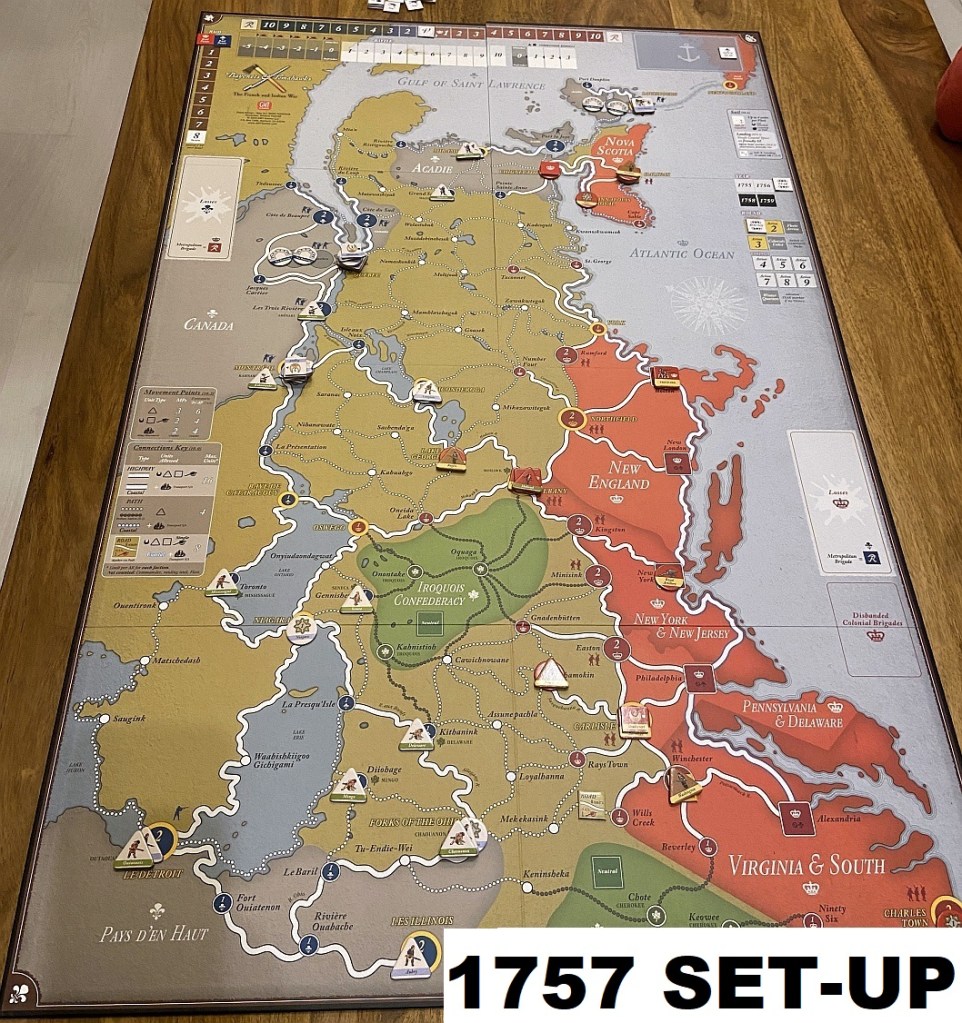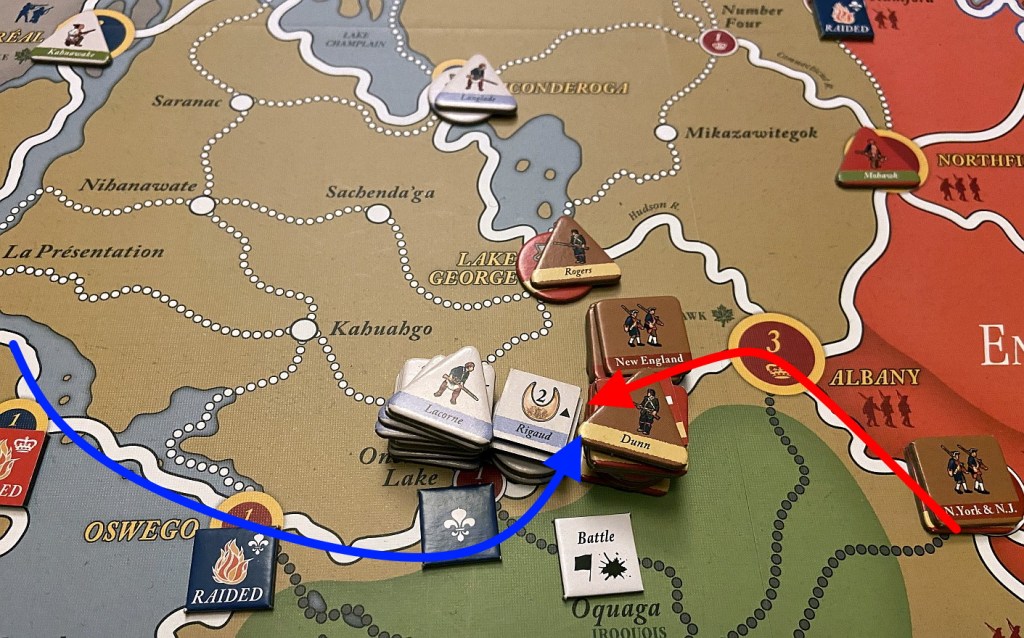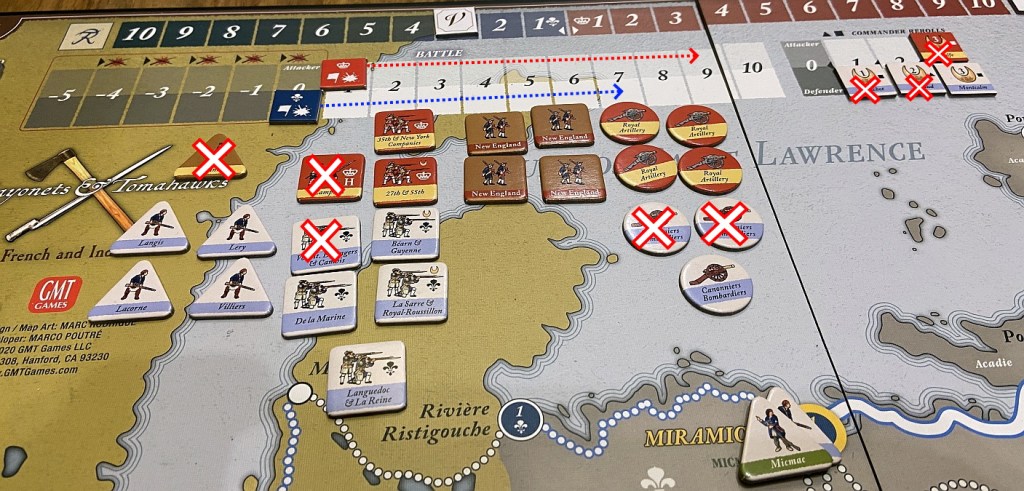This game is addictive – one you said A, you need to say B 🙂 I recently played initial, introductory scenario of Bayonets & Tomahawks – 1755 – and I immediately knew I need more! This was a solo session, with my two sons (6 & 8 years old boys) playing as bots, choosing from the options presented by Dad. This proved to be a great format and as all of us had a fantastic time, we decided to continue.
About the Game
Before going into session report details, let me provide some more info on the game itself. Bayonets & Tomahawks is a 2-player strategic game focusing on the French & Indian War 1755-1760. One player controls the British and the other takes the lead of the French and most Indians. We have full array of era-related concepts: Indian diplomacy, raids, constructions, naval operations, sieges, etc. Everything to immerse players in the fascinating military asymmetries of the 18th-Century colonial frontier.
A game of B&T can last 1 or more game years depending on the scenario chosen — up to the full conflict. During each game year, there are 8 action rounds where players move their pieces on land and sea, perform raids, build forts and roads, etc. Battles/sieges usually occur at the end of each action round. A game year also includes 3 logistics rounds: “Fleets arrive”, “Colonials enlist” and “Winter quarters”.
How does it play? B&T is card driven. However, unlike most card assisted war games player don’t manage a hand of cards. Each player starts the year with one undisclosed reserve Action card picked randomly. At the beginning of each Action round, both players draw a new card. They must then choose one of their 2 cards to play for the current round.
With this short game introduction let me now jump to Scenario 2.
Scenario 2 – Loudoun’s Gamble (1757) – historical background
Thanks to two years of mobilization, the British army is finally poised for the conquest of New France. Colonial forces’ involvement is at a low ebb mainly due to numerous setbacks in 1755 and 1756, and the unabated indigenous and French raid onslaught – you shall see this also on the game map! In reaction, the colonies focus on building defenses (forts in game terms).
A new British commander in chief arrives in North America. Loudoun becomes unpopular with colonial authorities as he tries to impose order in military and logistic affairs. Nevertheless, he is the one who drafts a sound plan to conquer New France by stages. He starts with an “all in,” sending almost all of his redcoats against his first crucial objective.
Canada slides into a more European way of war, thanks to General Montcalm who arrived in 1756. But New France’s defenders know how to take advantage of the vulnerability of British supply lines. And the French Navy makes a sustained and unprecedented effort to defend New France and keep it supplied. Still, Versailles focuses its military might to secure a victory in Germany.
Who will prevail?
Session Report
As always I am providing a picture-rich session report. As for the players, Jakub was leading French & Indian Forces, while older brother – Natan – was in charge of British / Colonial armies. You can also click on each of below images to see a full, enlarged version in the new window.







Summary
This was great game and great fun for the whole family; I had opportunity to thoroughly familiarize with this title, boys had a lot of fun playing raids etc. The basic mechanics are pretty straightforward – cards and Action Points – so they really had no problem to start – slowly but steadily – to make their own decisions.
And as a final note – are you curious what the final, historical outcome of the 1757 was? Here it is:
An unexpectedly strong French naval squadron derails the main British offensive. Though unharmed, the large British army at Halifax must stand idle, far away from where the French decide to strike. They destroy a crucial British fort (the second since 1756). Indigenous and French Raids continue all along the frontier.




Sounds really exciting. I would like to get this to our VASSAL rotation one of these days.
LikeLiked by 1 person
I think this is great async as there are almost no interruptions between the sides, and you do your turn end to end.
LikeLiked by 1 person